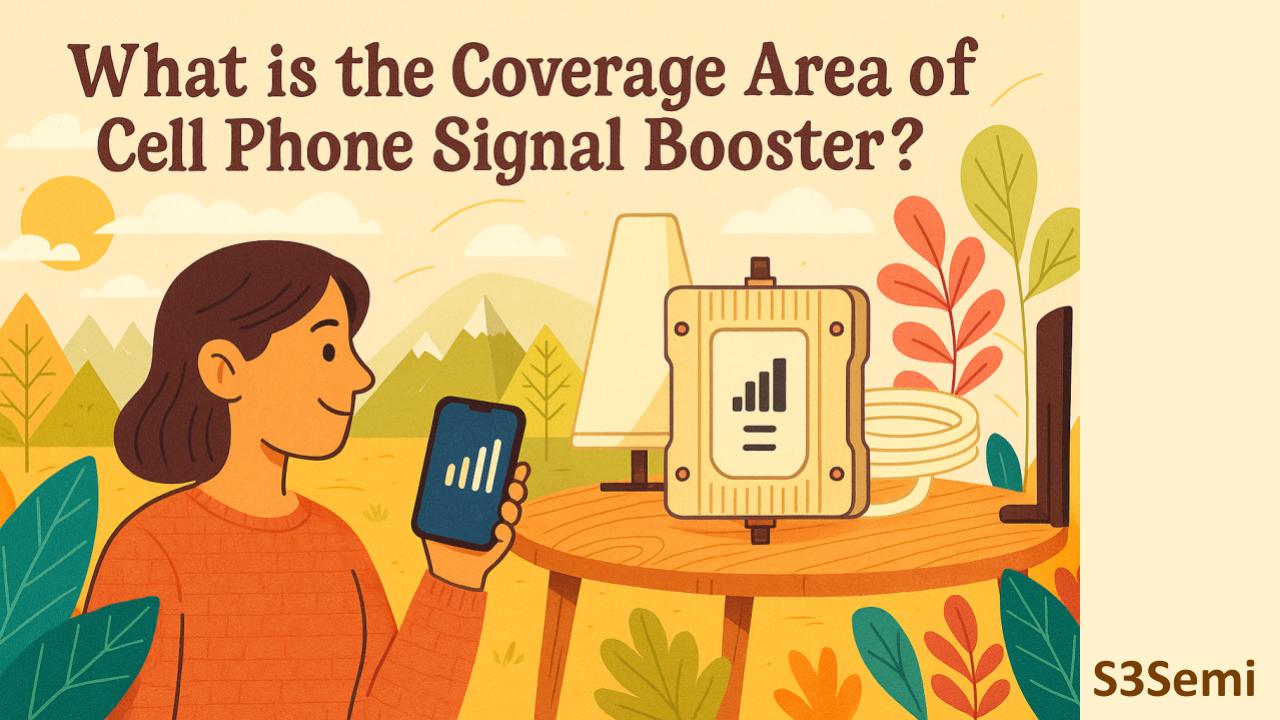📶 When shopping for a cell phone signal booster, one of the most important questions to ask is: How much space will it actually cover? The answer depends on several factors, including signal strength, antenna placement, and the type of booster you choose.
In this guide, we’ll help you understand how coverage area works and how to pick the right booster for your home, office, or vehicle.
🏡 Small vs. Large Spaces
The first step in selecting a signal booster is to match it to the size of the space you need to cover.
✔️ Small Spaces (Up to 1,500 sq ft)
- Ideal for apartments, dorm rooms, or single offices.
- Usually includes one indoor antenna and a compact amplifier.
- Easy to install and budget-friendly.
Example: weBoost Home Room, HiBoost Mini
🏠 Medium Homes (1,500 – 5,000 sq ft)
- Designed for multi-room coverage in homes or small offices.
- May include stronger amplifiers or optional second antennas.
- Works well if signal strength outside is moderate to strong.
Example: SureCall Fusion4Home, weBoost Home MultiRoom
🏢 Large Homes or Commercial Buildings (5,000 – 10,000+ sq ft)
- Powerful systems with high gain and multiple indoor antennas.
- Ideal for warehouses, large homes, and multi-floor offices.
- May require professional installation.
Example: weBoost Home Complete, WilsonPro 1100
✅ Tip: Always choose a booster rated slightly higher than your actual square footage for optimal performance, especially in weak signal areas.
🏠 Indoor vs. Outdoor Coverage
Signal boosters don’t improve outdoor coverage — they’re designed to pull in weak outdoor signals and amplify them indoors.
Key Indoor Coverage Factors:
- Outdoor signal strength: Stronger signals outside = better indoor coverage.
- Building materials: Concrete, metal, or thick insulation can reduce indoor coverage.
- Antenna placement: Properly placed antennas improve reach and performance.
For outdoor spaces like patios or work areas, specialized outdoor repeater systems or directional antennas may be needed.
✅ Tip: Mount the outdoor antenna as high as possible, ideally with a direct line of sight to the cell tower.
🛋️ Boosting Signal for Multiple Rooms
Need to boost signal across multiple rooms or levels? Here’s how multi-room coverage works:
Single-Antenna Systems
- Typically cover a single floor or several adjacent rooms.
- Best used in open layouts with minimal signal obstruction.
Multi-Antenna Systems
- Use splitters and cables to distribute signal across multiple antennas.
- Each antenna covers a specific zone (room, floor, or section).
- Often used in commercial spaces or large homes with poor layout for signal flow.
Antenna Types:
- Panel antennas: Wall-mounted, ideal for long hallway coverage.
- Dome antennas: Ceiling-mounted, great for even 360° distribution.
✅ Tip: Map your home’s layout and decide where coverage matters most — bedrooms, offices, basements — then choose your booster system accordingly.
📌 Conclusion
A signal booster can cover anywhere from a single room to an entire commercial facility — if you choose the right one for your space and signal conditions.
| Space Type | Recommended Coverage | Booster Class |
|---|---|---|
| Small Apartment or Room | Up to 1,500 sq ft | Basic booster |
| Medium Home | 1,500–5,000 sq ft | Mid-range booster |
| Large Home or Office | 5,000–10,000+ sq ft | High-gain or commercial booster |
| Multi-Room Layout | Zoned coverage with splitters | Multi-antenna setup |
By understanding your square footage, signal conditions, and layout, you can confidently choose a signal booster that delivers the coverage you need — and keeps your calls clear, texts fast, and data strong.
